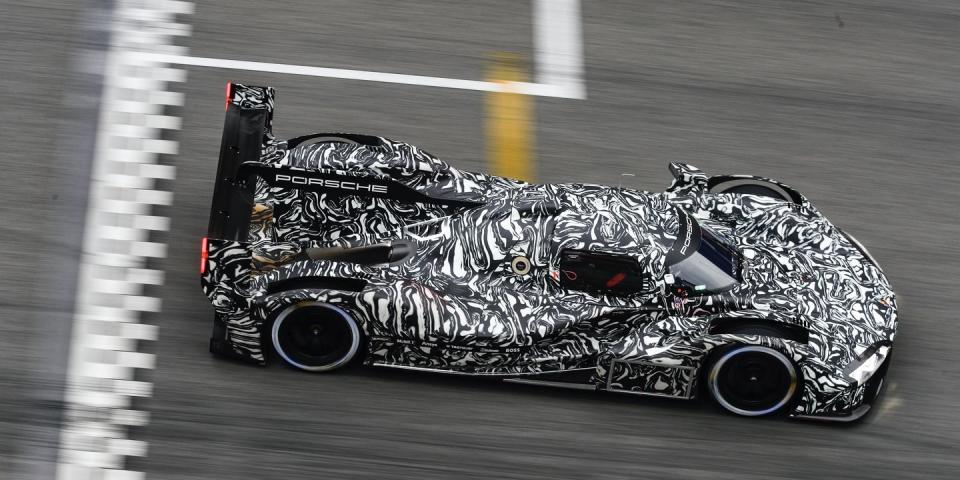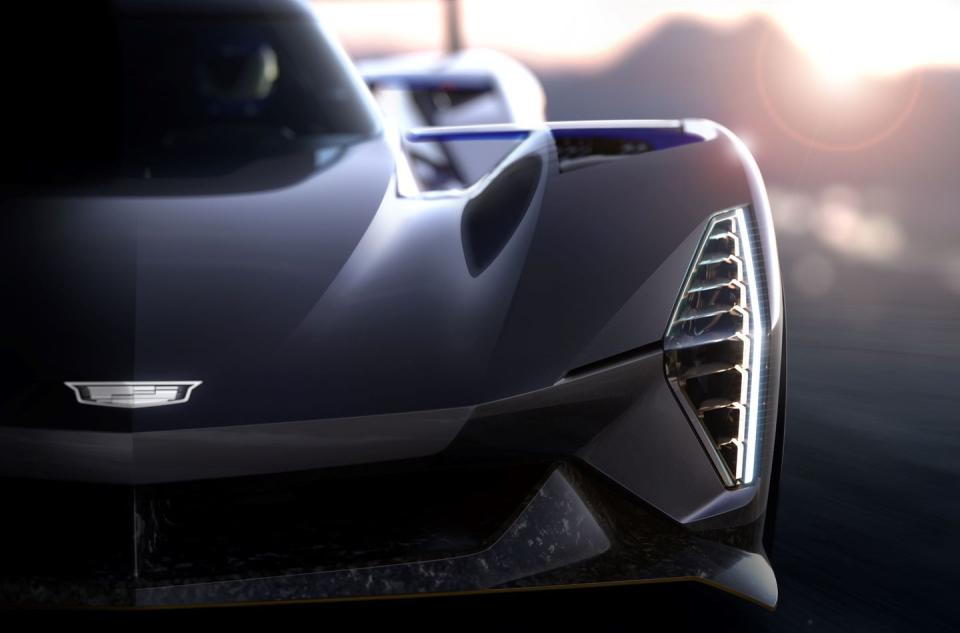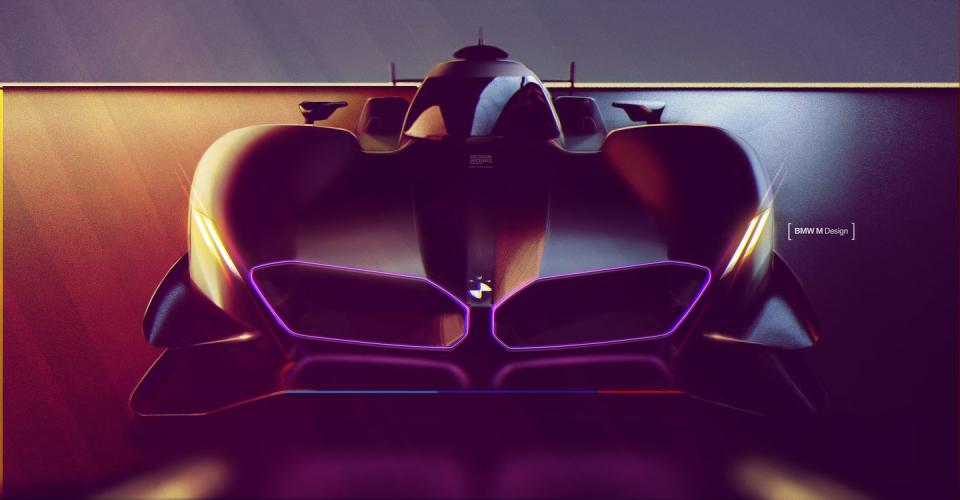There's Never Been Anything Like LMDh in Sports Car Racing

Since the rise of sports prototype race cars in the late Sixties, it feels like we've been doomed to repeat history. Cars either get regulated out of existence for being too fast and/or for purely political reasons, or manufacturers get priced out trying to one-up each other, leading to empty grids.
Five-liter monsters like the Porsche 917 and Ferrari 512, with their 5.0-liter engines were (justifiably) deemed too fast in the early Seventies. Group C was essentially killed by a switch from relatively open engine regulations, to an expensive F1-like formula in the early Nineties. GT1 was undone by Porsche, Toyota, and Mercedes all building increasingly expensive cars that stretched the definition of the term "road car." LMP1 was felled by cars that required F1-level budgets, in exchange for far less marketing value.
LMDh looks to not repeat old mistakes. First announced at Daytona in 2020, LMDh is a joint creation by IMSA and the ACO—the governing body of the 24 Hours of Le Mans—designed as a relatively low-cost platform for automakers to build a car to compete in the IMSA WeatherTech series and the FIA World Endurance Championship. That means an automaker can build one car to challenge for overall wins at Daytona, Sebring, and Le Mans. And to make sure that automakers stick around for the long haul, IMSA and the ACO are fostering something unprecedented—partnership and transparency.
"In the case of collaboration among all of the OEMs, the technical partners on the hybrid powertrain side, tire partner Michelin, it is the only way, I think, in the end to get to the unveiling in the first race of this new platform in 2023, with everybody working together," says IMSA president John Doonan in an interview with Road & Track. "When that race starts, it's every OEM for themselves, and they'll go out and put on an amazing show. But to get us to the starting point, it's been a very authentic level of communication among everybody to make sure that collectively as a sport, we get to the right place, reliably such that the cars can go out and perform."
LMDh regulations take IMSA's current DPi formula as a starting point. Like with DPi, LMDh cars are based around a chassis made by Dallara, Oreca, Multimatic, or Ligier, with bodywork, aerodynamics, and engine supplied by an OEM. The big difference starts engine rearward, with all LMDh cars sharing a common hybrid system with batteries supplied by Williams Advanced Engineering, motor from Bosch, and transaxle from XTrac. Tires are from Michelin. Output is limited to 671 hp at the rear wheels, while minimum weight is 2270 pounds. Dimensions are set as well, with maximum length of 16.7 feet, maximum width of 6.5 feet, and a wheelbase of 10.3 feet. Underfloor aerodynamics are regulated, though OEMs have freedom with bodywork, and thus, over-car aero.
In the runup to the debut of LMDh cars at the Rolex 24 at Daytona next year—where they will run in IMSA's GTP class, named in reference to its much-loved prototype class of the Eighties—all parties are talking with one another. That includes automakers, which attend regular meetings held by IMSA and the ACO. It's unusual in motorsport, but necessary to ensure that all of the common hybrid components function as required come next season. OEMs must also report any planned test dates to the working group. Any LMDh entry must also be submitted for wind tunnel testing by IMSA and/or the ACO.
In his previous role as head of Mazda Motorsports, Doonan was at meetings in 2018 and 2019 for what he calls "DPi 2.0." Partnership with the ACO came a bit later, and changed the game.
"IMSA was considering hybrid with the next-generation DPi," says IMSA technical director Matt Kurdock. But, a hybrid system was difficult to integrate with the current LMP2 chassis that underpin DPi cars. "By working with the ACO, what we found is that we could unify and build a new platform. It’s a monocoque designed around the survival cell where the battery goes in from underneath. Convergence between IMSA and ACO was necessary to make that happen."
Having a car that can compete in the IMSA WeatherTech series and the WEC—and thus the "triple crown" of endurance racing, Daytona, Sebring, and Le Mans—made LMDh viable. It's better for the OEMs, which want to race at the highest levels but don't want to spend exorbitant sums to do so; the hybrid-system suppliers and Michelin, who will have more customers; the chassis constructors, who can take on the expense and complexity of building a new, hybrid-ready chassis; and all the promoters, who will have more prototypes racing.

Doonan frequently repeats that old adage, "the market will speak." To that end, the two current DPi manufacturers, Acura and Cadillac, have committed to racing LMDh next year, with Porsche and BMW set to join as well. Alpine will have an LMDh car competing in 2024, and while Audi is rumored to have canceled its program, Lamborghini is expected to announce its entry for 2024 in the near future.
"Cost sustainability is critical and relevancy is critical, especially since motorsport is a major marketing platform for manufacturers," says Kurdock. "That's what this regulation set is intended to do—not only to provide a global cost-effective specification that includes hybrid, but doing it in a cost-controlled manner, which to date, at least in sports-car racing, is unprecedented."
OEMs must also report any private planned test dates to the working group, and in October, IMSA will hold a "sanction test" at Road America after Petit Le Mans for all LMDh cars aiming to compete next year. "It's officially organized by IMSA or the ACO or the collective, [and] that puts us in a place to gather data, monitor demonstrated performance," Doonan says. More tests will happen before Daytona next year, and LMDh cars set to compete in the IMSA WeatherTech Series must be brought to the Windshear wind tunnel in Charlotte for aerodynamic evaluation. Cars competing in WEC will be evaluated at the Sauber wind tunnel in Switzerland.

It's important for IMSA and the ACO to have this data, not only so there's fair competition between LMDh cars of various makes, but so they can be balanced against similarly named but quite different LMH prototypes. Le Mans Hypercar (LMH) was created by the ACO and the FIA to replace LMP1 following the departures of Audi and Porsche. LMH cars have chassis that aren't made by external suppliers, with the option of running a hybrid system on the front axle. So far, Toyota is competing with a hybrid Hypercar, with Peugeot set to join the grid later this year, and Ferrari to follow next year. The American Glickenhaus team runs a non-hybrid hypercar in WEC, and privateer ByKolles aims to do the same with a car carrying the Vanwall name. In next year's World Endurance Championship LMH and LMDh cars will compete with one another, and while LMH cars are invited to compete in the IMSA WeatherTech series, no entries have been yet announced, though the Peugeot 9x8 may come to the U.S. as, hilariously, a Dodge. The idea is for both LMH and LMDh cars to lap Le Mans in around 3:30. "Whether it's the tire choice, whether it's the aero testing… whether it's four-wheel drive activation speeds I think we're in a place to monitor the cars such that they will be able to compete equitably."
Still, OEMs are allowed a decent amount of freedom with the internal-combustion engine in particular. Per a Porsche press release from earlier this year, the engine has a weight minimum of 180 kg (396.8 pounds), a rev limit of 10,000 rpm, and it must be no louder than 110 decibels.
But, it doesn't have to be production-based. "We have restrictions on maximum engine length, and that's to protect the packaging of the hybrid system," Kudrock says. "640 mm maximum engine length, we have a minimum crankshaft height, we have a minimum weight. So basically, you can bring a highly bespoke, but you may end up having to bolt ballast to it, you may end up having to compromise."
LMH and LMDh cars will be limited to 644 to 697 hp at the wheels, depending on Balance of Performance, and that includes both engine and hybrid system. Kurdock implied that it might behoove manufacturers to go with a production-based engine, as in LMDh, the hybrid system can be used to make up any gap between ICE output, and the maximum allowed horsepower at the wheels. "You don't necessarily need to bring a bespoke racing engine, a very high-power racing engine. You could bring a production engine and use a portion of the hybrid system to fill in that power gap and hit the target. That's what the hybrid system is designed to do."
The hybrid system is made to offer continuous power output, though OEMs can deploy the extra power however they like. Still, it seems like Porsche is doing something interesting with its ICE—videos of the car testing reveal something that sounds an awful lot like a flat-plane V-8.
There's much work to be done between now and that first sanction test. OEMs will conduct private tests, build up infrastructure, finalize driver lineups, and sell cars to customer teams. The exact spec of the hybrid system is being finalized as well. But once the green flag flies at Daytona next January, the hope is that all this collaboration will give way to fierce competition between many automakers for years to come.
You Might Also Like

 Yahoo Autos
Yahoo Autos 